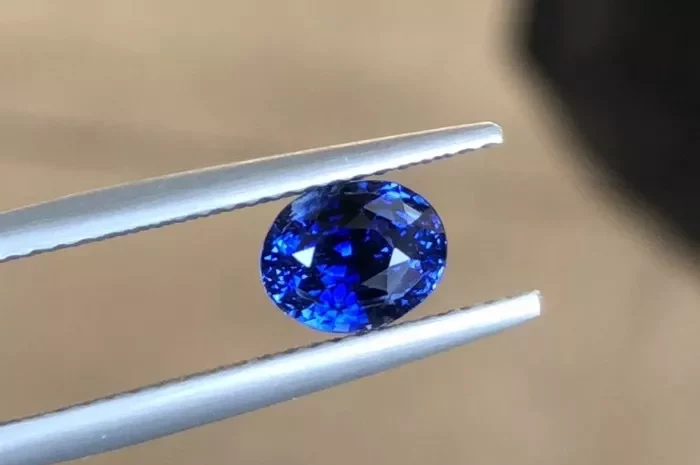Yellow sapphires are among the most sought-after gemstones in the world, prized for their stunning color and brilliance. As a member of the corundum family, yellow sapphires are formed through a complex geological process that takes millions of years. Understanding how loose yellow sapphires are formed not only enhances our appreciation for these beautiful gems but also provides insight into their rarity and value. This article will explore the formation of yellow sapphires, their characteristics, and their significance in the world of jewelry.
Introduction to Yellow Sapphire
What is Yellow Sapphire?
Yellow sapphire is a precious gemstone that belongs to the corundum mineral family. Corundum is composed of aluminum oxide and is known for its hardness, ranking 9 on the Mohs scale, just below diamond. While sapphires can occur in various colors, yellow sapphires are specifically characterized by their vibrant yellow hue, which can range from pale lemon to deep golden shades. The presence of trace elements, particularly iron, is responsible for the yellow coloration.
Significance of Yellow Sapphire
Yellow sapphires are not only valued for their beauty but also for their metaphysical properties. In various cultures, yellow sapphires are believed to bring prosperity, wisdom, and protection. They are often associated with the planet Jupiter, which is considered a symbol of good fortune and abundance in astrology. As a result, yellow sapphires are frequently used in jewelry, including rings, necklaces, and earrings.
The Geological Formation of Yellow Sapphire
The Role of Heat and Pressure
The formation of yellow sapphires begins deep within the Earth’s crust, where intense heat and pressure create the ideal conditions for corundum to develop. The process begins with the crystallization of aluminum oxide in metamorphic rocks. Over millions of years, these rocks undergo significant geological changes, including:
Metamorphism: Existing rocks are subjected to high temperatures and pressures, causing the minerals within them to recrystallize. This process can transform clay-rich rocks into schist or gneiss, which can contain corundum.
Magmatic Activity: In some cases, yellow sapphires can also form from magmatic processes. When magma cools slowly beneath the Earth’s surface, it allows larger crystals to grow. This can lead to the formation of sapphires in igneous rocks.
The Role of Trace Elements
The vibrant yellow color of sapphires is primarily due to the presence of trace elements, particularly iron. During the crystallization process, iron ions can replace aluminum ions in the crystal lattice of corundum. The specific concentration and oxidation state of iron determine the shade of yellow in the sapphire. For example, higher concentrations of iron typically result in deeper, more intense yellow hues.
The Mining Process
Once yellow sapphires have formed in the Earth’s crust, they must be extracted through mining. There are several methods of mining sapphires, including:
Alluvial Mining: This method involves searching for sapphires in riverbeds and streams where they have been naturally eroded from their original source. Alluvial mining is common in regions where sapphires are found in sedimentary deposits.
Open-Pit Mining: In areas where sapphires are found in hard rock formations, open-pit mining is used. This method involves removing layers of soil and rock to access the sapphire-bearing deposits.
Underground Mining: In some cases, sapphires are extracted from deeper deposits through underground mining techniques. This method requires specialized equipment and safety measures to ensure the safety of miners.
Characteristics of Loose Yellow Sapphire
Color and Clarity
The color of yellow sapphire is one of its most important characteristics. The best yellow sapphires exhibit a rich, vivid yellow hue with excellent clarity. Clarity refers to the presence of internal flaws or inclusions. High-quality yellow sapphires are typically free from visible inclusions, allowing light to pass through and enhance their brilliance.
Cut and Shape
The cut of a yellow sapphire significantly affects its overall appearance. Skilled gem cutters shape the rough sapphire into various forms, including round, oval, cushion, and emerald cuts. The cut must maximize the stone’s brilliance and color while minimizing any visible inclusions. A well-cut yellow sapphire will reflect light beautifully, showcasing its vibrant color.
Carat Weight
Like other gemstones, yellow sapphires are measured in carats. The carat weight of a sapphire can influence its value, with larger stones typically being more valuable. However, color and clarity also play significant roles in determining a sapphire’s overall worth.
The Value of Loose Yellow Sapphire
Factors Influencing Value
Several factors contribute to the value of loose yellow sapphires, including:
Color: The most important factor is color. Vivid, intense yellow sapphires with no brown or gray undertones are the most valuable.
Clarity: Clarity is crucial; sapphires with fewer inclusions are more sought after and command higher prices.
Cut: A well-executed cut enhances the stone’s brilliance and overall appearance, contributing to its value.
Carat Weight: Larger sapphires are rarer and more valuable, but their price also depends on color and clarity.
Origin: The source of the sapphire can also affect its value. For example, sapphires from Kashmir are highly prized due to their historical significance and exceptional quality.
Market Demand
The demand for yellow sapphires has increased in recent years, driven by their popularity in jewelry and their perceived astrological benefits. As more consumers seek unique and meaningful gemstones, the market for yellow sapphires continues to grow.
Conclusion
Loose yellow sapphires are formed through a complex geological process that takes place over millions of years. From the intense heat and pressure deep within the Earth to the influence of trace elements, each yellow sapphire tells a unique story of its formation. Their stunning color, clarity, and brilliance make them highly sought after in the world of jewelry. Understanding how yellow sapphires are formed not only enhances our appreciation for these beautiful gemstones but also highlights their significance in culture and commerce. Whether worn for their beauty or their believed metaphysical properties, loose yellow sapphires remain a symbol of elegance and luxury.
Related topic:
- Nigerian Yellow Sapphire: A Gemstone of Distinction
- Lemon Yellow Sapphire: The Bright Gem of Optimism
- How Much Carat Yellow Sapphire Should Be Worn


